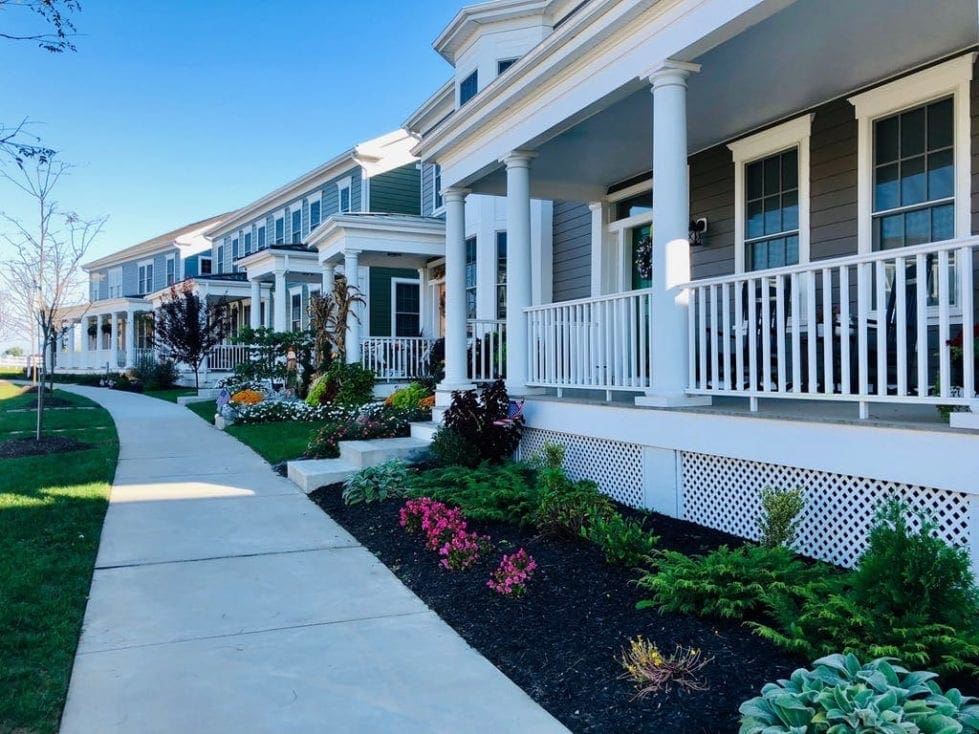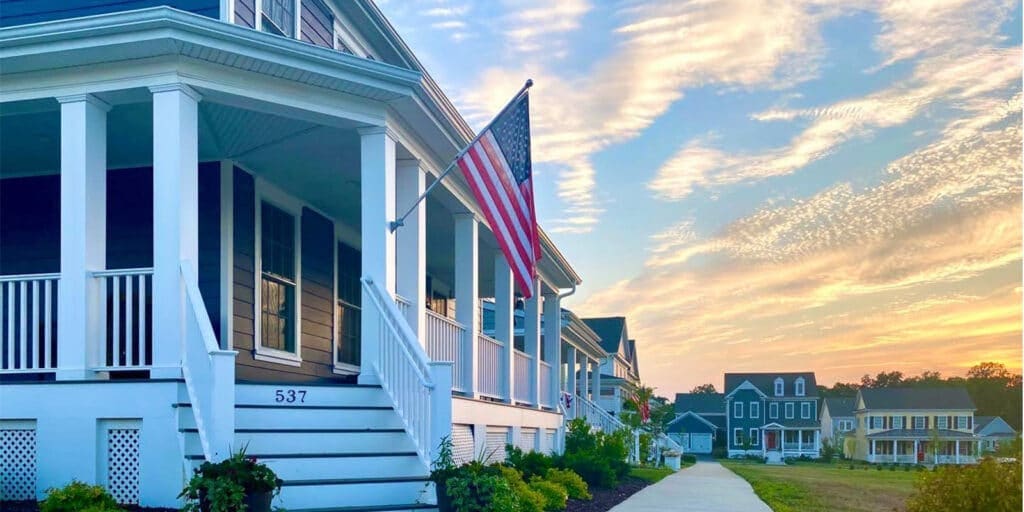

Whtehall will hold its 7th annual celebration of the arts April 25.
Mitch Cooper has watched the Town of Whitehall grow up around him, and it shows no signs of slowing down.
Cooper and his partner Andy Lavoie became the second couple to move into the Middletown subdivision when they unpacked on Oct. 11, 2016.
The streets were paved only for the lots that were available, and Cooper and Lavoie may has well have been on the edge of a frontier. Sidewalks were spotty and landscaping existed mostly of green pipes sticking up out of the ground. The only buildings standing were the welcome center and the twin homes belonging to Cooper and his next-door neighbors, Beth and Jay Anderson.
Now there are more than 100 homes with about 250 residents, and a boost from the COVID-19 pandemic may help fulfill Whitehall’s ambition to be the kind of walkable neighborhood our grandparents remember growing up in.
Members of the Delaware Economic and Financial Advisory Council, which helps set the state’s budgets, have said during meetings that one reason the state’s real estate transfer tax has been so high is that many houses are being sold to people who can work from home anywhere and are choosing to leave crowded urban areas for the First State.
Whitehall developer Brian DiSabatino says that’s definitely true, and he’s seen interest from people living in the Philadelphia and New York areas.
“I’d say our numbers popped by at least 30% by people who loved the walkability of urbanity but had ‘had it’ with the big cities,” he said. “They now were able to choose to live somewhere they loved, while telecommuting more effectively. There is something nice about being able to lace up your sneakers after sitting on a Zoom for two hours.”
Whitehall may reap the benefits of being in the right place at the right time, it took decades to get there.
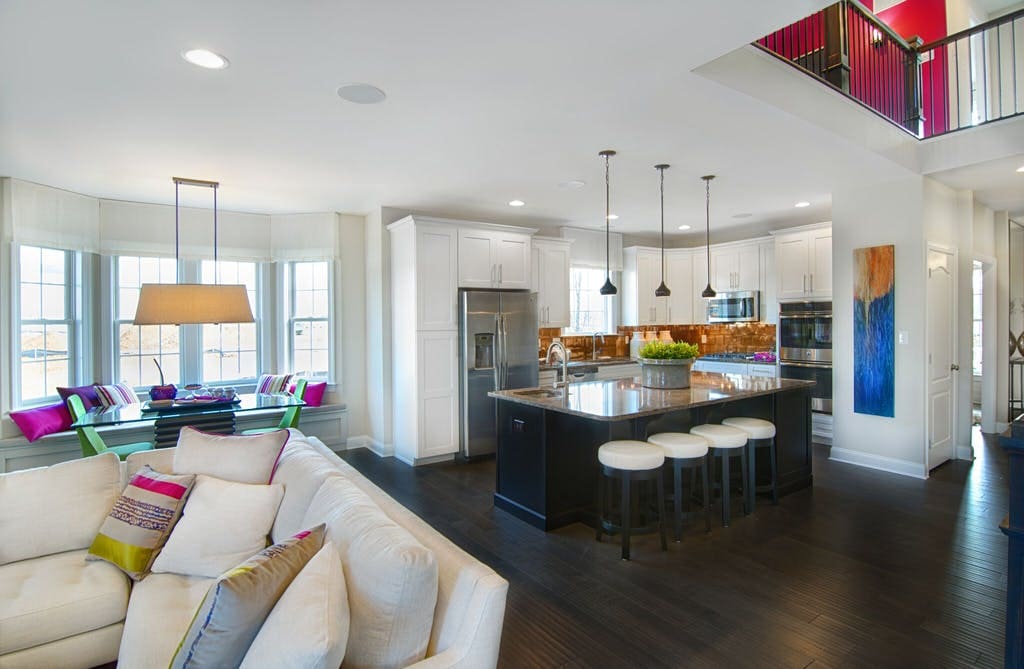

Many of the property designs include open spaces and first-floor master bedrooms.
Creating a walkable community that was more than just tract housing was the brainchild of Robert H. Bolling Jr. and the trustees of the Welfare Foundation Inc. It is a charity founded in 1930 by Pierre S. du Pont to promote the social welfare of people and communities in Delaware and Southern Chester County, Pennsylvania.
For his new neighborhood, Bolling first considered property in Christiana Hundred, where the Blood Bank of Delmarva now sits, before settling in 1984 on 2,000 acres south of the D&C Canal that Delmarva Power & Light decided wasn’t right for a nuclear power plant it wanted to build.
Bolling spent nearly two decades researching communities and hiring other planners before coming to DiSabatino with EDiS Co. and Rich Julian of Eastern States Construction Co. in 2003.
They wanted to get away from standard designs and looked back to the kind of traditional neighborhoods with a town center, mixed housing and lots of public spaces that disappeared in the early 1900s. The planners wanted to create a new town with shopping, restaurants, medical care, sidewalks, parks and schools that kids could walk to.
Rehoboth, Lewes, Arlington, Virginia, Annapolis, Maryland, and the Kentlands in Gaithersburg all offer the look, vibes and connectivity that the planners wanted.
That sense of place and the promise of easier day-to-day living is what Christian and Jeremiah Guy wanted in their new home. As newlyweds, they lived with his parents Asbury Chase, about six minutes away from Whitehall. Her mother-in-law suggested they look at Whitehall.
“I figured she wanted her son to be close,” Christian says with a smile in her voice. “And I didn’t really want to look.”
But she went anyway, and loved Whitehall. Just to be sure, she and her husband visited several other neighborhoods, but came back. The sales manager was lovely and when Christian realized they could have a home just down the street from where their 2-year-old son would go to school, she was sold.
“I grew up in a city and could pretty much walk to a lot of places,” she said. “I wanted our son to have that experience. I could watch him leave our front porch, all the way to school, and walk to the bakery or whatever. I felt like that was the opportunity that Whitehall would give us.”
The Guy family lives in a twin home with an open floor plan, high ceilings and crown moldings throughout it. They also have massive built-in shelving, about which visitors always comment, and an attached garage, which slowed down the building process because no other homes had one up. Adding the garage meant having a smaller back yard, but the Guys were happy with the trade-off.
Error, group does not exist! Check your syntax! (ID: 11)
As Disbatino and Julian were researching neighborhoods around the country, the recession of 2008-2009 hit and killed the housing market. But, DiSabatino said, that also allowed the planners to really reflect on what they were doing.
Breaking ground 19 years after they were hired, DiSabatino and Julian had settled on the idea of creating the property as a series of four communities consisting of two villages and two hamlets. The hamlets will have little, if any, retail or commercial spaces.
The first village is Mapleton Village, where Appoquinimink School District’s Lorewood Grove Elementary School opened two years ago. A Whitehall Office Building across from it houses Christiana Care medical offices including family and neurology open five days a week. Whitehall now is considering proposals from restaurants to go in nearby, and other offices are expected to open soon. The second village, Grandview, will be build northeast of Mapleton, with views of the canal.
Across Lorewood Grove Road, the first hamlet is Traditions at Whitehall, a 55-plus village owned by Benchmark Builders Inc. The second hamlet, Boyd’s Landing, will be built closer to the canal, with views of the waterway that links Delaware River and Chesapeake Bay.
As they were planning, DiSabatino and Julian realized in New Castle County, as with the rest of the country, zoning laws had been gradually changed so that some property wasn’t being allowed to do what it was meant to do. They wanted an organized mix of uses, with property built to enhance that, and had to work closely with New Castle County to make sure laws allowed that.
“One of these elements is the quarter-mile walk,” DiSabatino said, “and the idea is that if you’re going to suggest that people take a walk, that walk has to be beautiful. That’s why we have these tree-lined streets.”
Standing in front of the welcome center, which is designed to be repurposed as a coffee shop or small store, DiSabatino faces the school in one direction and the new medical building in the other.
“This is the most dense area of town,” he said. “And there’s a set of rules for buildings when you’re here. For instance, there’s no front lawns, right? It’s an urban area. This is our urban core.”
Just down the street they plan to put in restaurants and eventually apartments, but as you walk or drive away from the urban core, “you begin to see the slow progression of change in architecture and landscape.”
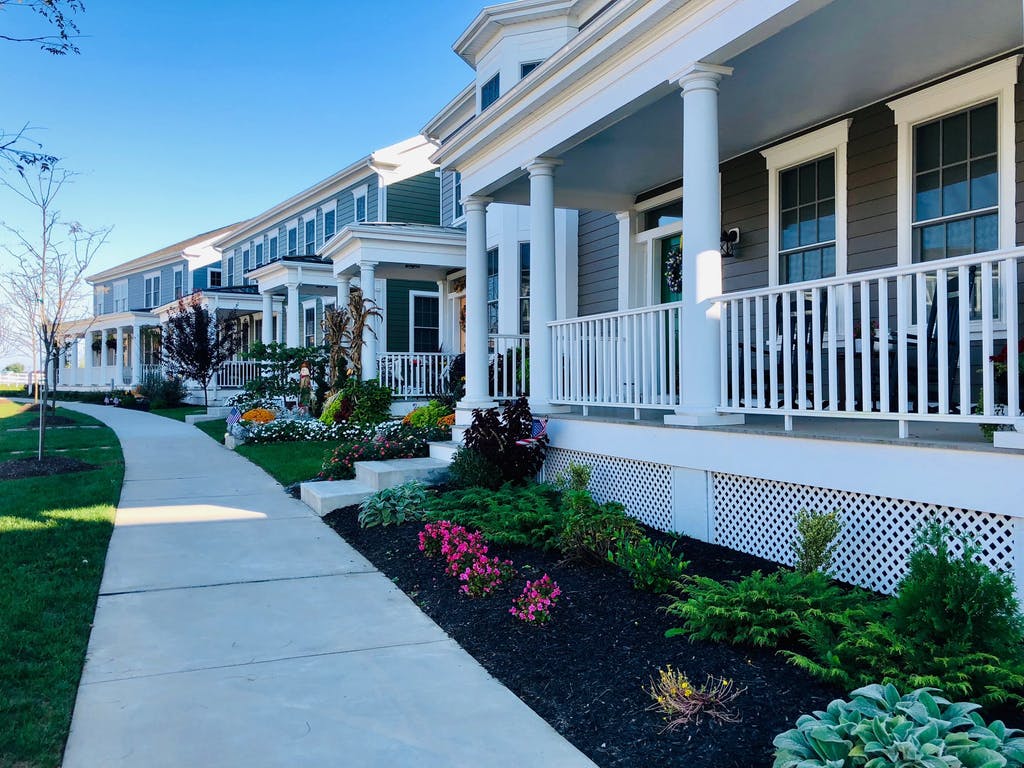

The architecture of the street is as much a value at Whitehall as the spaciously designed units.
Houses are smaller near the urban center, and some are twin homes. They get bigger the further you move out, but all of them have charming porches and some side entrances, with alleys behind the homes hiding cars, trash cans and garage doors.
“As you’re walking down the street, we want you to see the houses, not garage door after garage door,” DiSabatino said. “We’re always presenting architecture to you.”
It’s part of their philosophy that creating a great place starts with attracting the creative class, a philosophy championed by urbanist Richard Florida.
“We believe that if Delaware is going to thrive, it needs to invest in, to celebrate its great places, and that the cities and towns and Delaware should be seen as places for investment and growth and celebration,” DiSabatino said. “We have organized the development of Whitehall physically and artfully in a way that both attracts and celebrates the creative class.”
It’s one reason Whitehall will hold its seventh annual Art Fest from noon to 4 p.m. on April 25.
“You’re going to see a lot of art by vendors on display, but we also will have people take a look at some of our landscapes, some of our buildings, some of our houses and understand that art in architecture and land planning is equally powerful,” DiSabatino said. “Culture is one of the many things along with education and health and recreation that sit at the core of our philosophy.”
Art Fest is one of many community events the town sponsors, including Vet Fest in September, a Fourth of July celebration and fireworks in the park. During summer, musicians perform weekly in a park for the community, and a couple of food trucks show up so people can eat during the show.
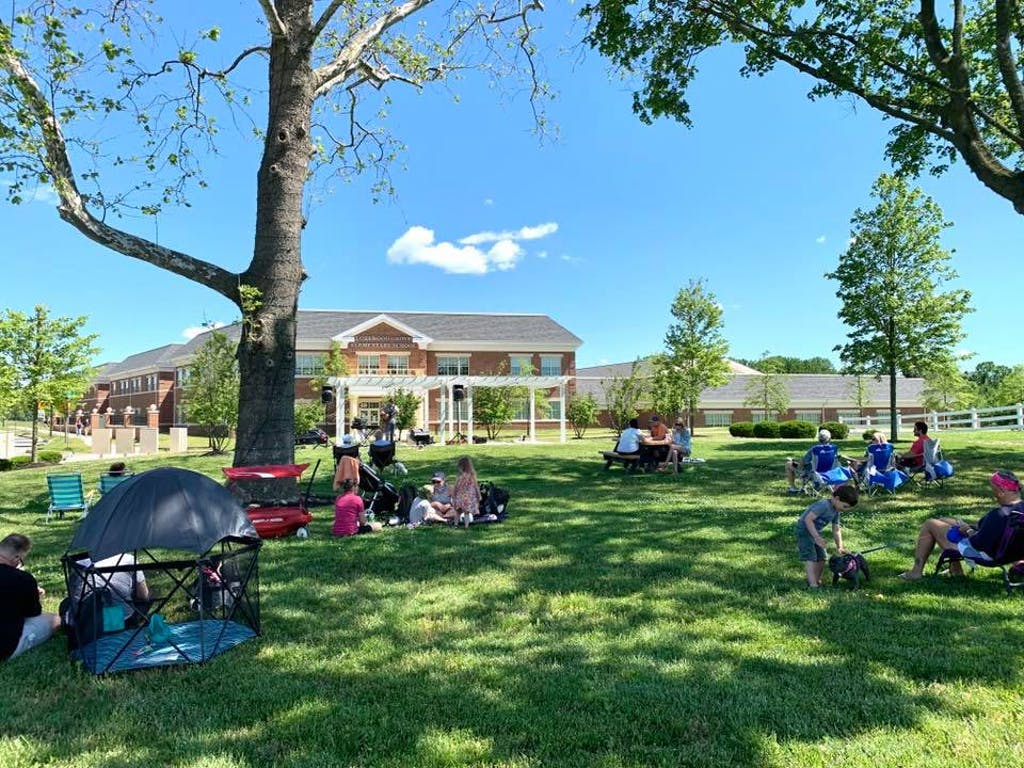

Whitehall offers movies, fireworks, festivals, including Art Fest this month, to bring residents together.
Vet Fest is what brought Navy man Bob Elder and his wife Neyja to Whitehall from Kennett Square. Before moving, he attended Vet Fest for three years.
“As I did, I watched this place develop,” he said. “We began feeling in our other house that it was time for us to make a move, and I came down here one time and called Neyja and said, ‘You’ve got to come down here’ … All of a sudden this became love at first sight. We didn’t look at any other place.”
Their house was a townhome, but he asked them alter it a bit so it’s now a single-family home with a wrap-around porch. They live on the first floor, but have three bedrooms and a loft upstairs, as well as a finished basement, giving them plenty of room for visiting family.
“The fun of this place is that you can go and take a look at one of the templates of any of the houses and make that into what you want,” Elder said. “And that’s what we did.”
Both are excited about the amenities like medical care just down the street and the promise of coffee or deli shops near by.
Neyja particularly loves the porch, which allows them to visit with neighbors walking by, and helped them quickly feel a part of the community. The homes are so close to the schools, Elder said kids could walk home for lunch, like he did many years ago.
“We love the sense of community, we love the sense of porch life and all of it gives us a sense of belonging,” Elder said.
That sense of community and mix of homes and retail is what enchanted Cooper, too.
Whitehall offered him a bonus: His ex-wife and their children live three miles away, and he wanted to be close. His first house was a twin home, and he didn’t mind sharing a wall with someone.
“Since we’ve been here from the beginning, we’ve gotten a chance to know the neighbors,” Cooper said. “It’s the only place I’ve ever lived where I actually know the names of my neighbors. I lived in another neighborhood for 20 years and I think I knew two neighbors by name.”
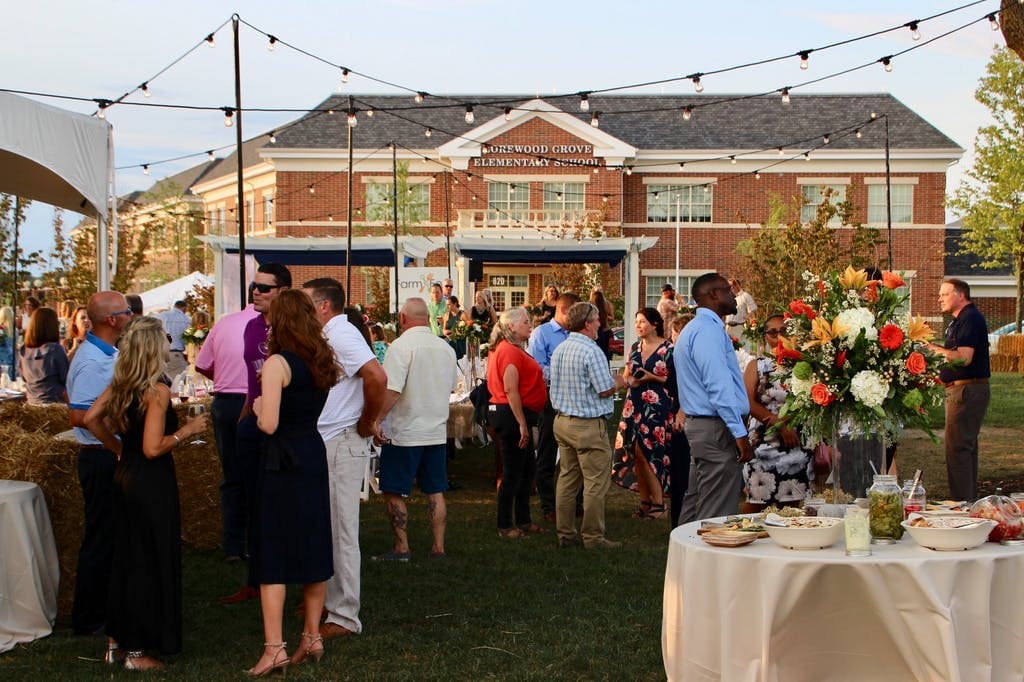

Dinner in the park in front of Lorewood Grove Elementary was an Appoquinimink Foundation fundraiser.
COVID-19 disrupted many of Whitehall’s community events, but the weekend concerts continued and people stayed in touch through walks and over a community Facebook page, he said.
Cooper said he and Lavoie are curious to see how the property develops.
“I’m looking forward to seeing how it moves toward the canal,” he said. Cooper has a decade or a little more before he’s ready to retire.
“I’m even kind of hopeful we may be able to switch and live on the canal,” he said. “That’s the other thing I like about Whitehall. They do have mixed uses of space and they are going to have some rentals in there. If it came to it, we could rent our house and live in one on the canal.”
There are five types of homes available at the moment — twin, townhouse, cottage, courtyard and estate, many with master bedrooms on the first floor. Each category includes several models with upgrades and other options. They start at $330,000, and with customizations, they range to more than $700,000.
Ultimately, Mapleton Village will have about 500 homes in it, including the apartments. All villages will total about 1,500 units.
He expects to have Mapleton finished in about seven years, but finds it hard to speculate how long it will take to build out all four villages.
Mapleton’s streets are named for bicycle manufacturers as a nod to Delaware’s long love affair with the two-wheeled vehicle, including Schwinn Street, Torker Street, Le Mond Drive, Henley Drive, Columbia Street and Raleigh Street.
In 2017, Whitehall transferred ownership and control to EDiS Co. and Eastern States.
“Every time we make money, we have to plow it right back in,” DiSabatino said. “What’s unusual about Whitehall is that it’s unusually expensive to build this way. But we’ve made the decision to take the long view. This style of development requires a developer with extraordinary patience and the willingness to stay in touch with their mission.”


Betsy Price is a Wilmington freelance writer who has 40 years of experience, including 15 at The News Journal in Delaware.
Share this Post


